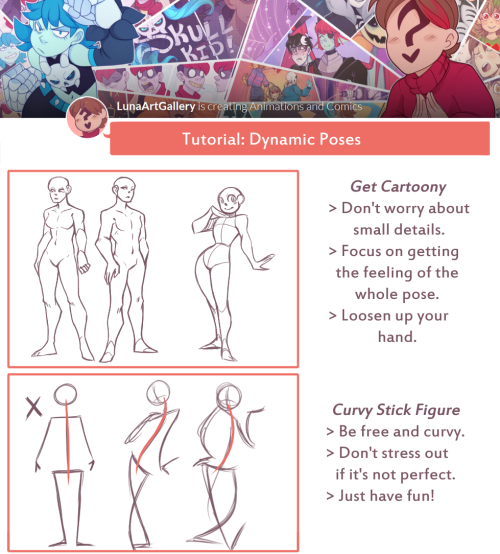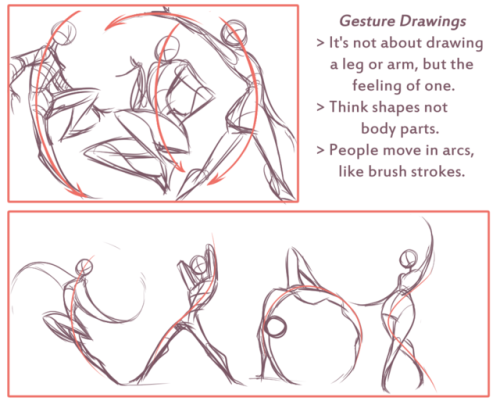Art Help
Art Help

I redid this list because broken links 💀
General Tips
Stretch your fingers and hands
Art is for fun
Never too late to start/improve
Using a tablet
Editing software: pictures & video
Moodboard resources
Comic pacing
Watercolor
Coloring
Color Theory (not children's hospital)
Resources: coloring things a different color
Gold
Dark Skin undertones
Dark Skin in pastel art
POC Blush tones
Eyes colors
Human Anatomy
POSE REFERENCES
Wizard Battle poses
Shoulders
Tips for practicing anatomy
Proportional Limbs
Skeletons
Hair Directions
Afro, 4C hair
Clothing
Long skirts
Traditional Chinese Hanfu (clothing reference)
CLOTHING REFERENCE
Sewing information
Animals
Horse -> Dragon
Snouts: dogs, cats, wolves, fox
Foot, paw, hoof
More
Drawing references sources
Art tutorial Masterlist
Another art tutorial Masterlist
Inspiration: father recreates son's art
Inspiration: Lights
ART BOOKS
Plants/flowers: North America, Hawaii, Patagonia
More Posts from Basket-of-references and Others




Here's my "lazy" foliage tutorial! 🍀 (I say "lazy" in quotes as I consider this method a shortcut, but still requires some effort for the drawing to look nice)
Gif version of the process:

Thanks for reading!
Main art blog/ Consider tipping me on Ko-fi if you've found this useful!
I feel stupid for asking this so im using anon, but how do you draw the hijab? Whenever I try it looks like an egg www
also, Ramadan Mubarak! May Allah bless you
Don’t feel stupid for asking! Drawing is hard no matter what you’re drawing, so don’t be afraid to ask for help^^ But honestly even I feel like the best of my hijabis look a little egg-like, and that’s okay!











This tutorial is already taking so goddamn long, so I’m just gonna link my coloring and shading tutorial I did a month ago 😭😭

Gosh, I hope what I wrote made sense 😅 But thank you so much for the well wishes! Happy Ramadan (Eid Mubarak at this point WAHHH), and the same to you, may you and your loved ones have many blessings!!
ADDITIONAL REFERENCES
Winchester Meg's Hijab Drawing Tutorial
Souratgar's Hijab Drawing Tutorial
General Tips for Drawing and Shading Fabrics

"and the centry owl stood guard, protector of all in need." TFE, S1E13
Love love love Nightshade's new form 🦉
I compiled a reference for all my artist homies, and myself~
Writing advice from my uni teachers:
If your dialog feels flat, rewrite the scene pretending the characters cannot at any cost say exactly what they mean. No one says “I’m mad” but they can say it in 100 other ways.
Wrote a chapter but you dislike it? Rewrite it again from memory. That way you’re only remembering the main parts and can fill in extra details. My teacher who was a playwright literally writes every single script twice because of this.
Don’t overuse metaphors, or they lose their potency. Limit yourself.
Before you write your novel, write a page of anything from your characters POV so you can get their voice right. Do this for every main character introduced.



Art Tutorial Preview
This one was a short weekly tutorial briefly talking about gesture drawing, shapes and how to reference. Next week I’ll do a reference sheet with dynamic poses, I didn’t get to it this week cause I ran out of time. Anyways I hoped this helped some people!
Yo! Get full access to all my tutorials/references through: Patreon: [https://www.patreon.com/lunaartgallery] or Paypal Order: the 10$ package will get you 15 items of anything available on my Patreon, emailed directly to you.
Thank you~!
Wdym by distinctive nose?
(this was what i said was one of my "signature" OC traits in some tags awhile back)
noses are one of my favorite features to draw, so i put all my Best Shapes in the nose. i try to give each character a different one (unless they're related), because it's fun!

noses (੭ ˊᵕˋ)੭




I've had this little idea in my head for a while now, so I decided to sit down and plot it out.
Disclaimer: This isn't meant to be some sort of One-Worksheet-Fits-All situation. This is meant to be a visual representation of some type of story planning you could be doing in order to develop a plot!
Lay down groundwork! (Backstory integral to the beginning of your story.) Build hinges. (Events that hinge on other events and fall down like dominoes) Suspend structures. (Withhold just enough information to make the reader curious, and keep them guessing.)
And hey, is this helps... maybe sit down and write a story! :)
How to avoid White Room Syndrome
by Writerthreads on Instagram
A common problem writers face is "white room syndrome"—when scenes feel like they’re happening in an empty white room. To avoid this, it's important to describe settings in a way that makes them feel real and alive, without overloading readers with too much detail. Here are a few tips below to help!
Focus on a few key details
You don’t need to describe everything in the scene—just pick a couple of specific, memorable details to bring the setting to life. Maybe it’s the creaky floorboards in an old house, the musty smell of a forgotten attic, or the soft hum of a refrigerator in a small kitchen. These little details help anchor the scene and give readers something to picture, without dragging the action with heaps of descriptions.
Engage the senses
Instead of just focusing on what characters can see, try to incorporate all five senses—what do they hear, smell, feel, or even taste? Describe the smell of fresh bread from a nearby bakery, or the damp chill of a foggy morning. This adds a lot of depth and make the location feel more real and imaginable.
Mix descriptions with actions
Have characters interact with the environment. How do your characters move through the space? Are they brushing their hands over a dusty bookshelf, shuffling through fallen leaves, or squeezing through a crowded subway car? Instead of dumping a paragraph of description, mix it in with the action or dialogue.
Use the setting to reflect a mood or theme
Sometimes, the setting can do more than just provide a backdrop—it can reinforce the mood of a scene or even reflect a theme in the story. A stormy night might enhance tension, while a warm, sunny day might highlight a moment of peace. The environment can add an extra layer to what’s happening symbolically.
Here's an example of writing a description that hopefully feels alive and realistic, without dragging the action:
The bookstore was tucked between two brick buildings, its faded sign creaking with every gust of wind. Inside, the air was thick with the scent of worn paper and dust, mingling with the faint aroma of freshly brewed coffee from a corner café down the street. The wooden floorboards groaned as Ella wandered between the shelves, her fingertips brushing the spines of forgotten novels. Somewhere in the back, the soft sound of jazz crackled from an ancient radio.
Hope these tips help in your writing!
-
 perilock-959 liked this · 4 days ago
perilock-959 liked this · 4 days ago -
 ghoulishechoes liked this · 4 days ago
ghoulishechoes liked this · 4 days ago -
 jkfrazer liked this · 4 days ago
jkfrazer liked this · 4 days ago -
 puppycried liked this · 4 days ago
puppycried liked this · 4 days ago -
 lethesbeastie liked this · 4 days ago
lethesbeastie liked this · 4 days ago -
 rubydrawz liked this · 5 days ago
rubydrawz liked this · 5 days ago -
 doomkittypumpkin liked this · 5 days ago
doomkittypumpkin liked this · 5 days ago -
 souldew16 reblogged this · 5 days ago
souldew16 reblogged this · 5 days ago -
 hauntedskeletonpup reblogged this · 5 days ago
hauntedskeletonpup reblogged this · 5 days ago -
 hauntedskeletonpup liked this · 5 days ago
hauntedskeletonpup liked this · 5 days ago -
 pvppy-love liked this · 5 days ago
pvppy-love liked this · 5 days ago -
 kimi-konami liked this · 5 days ago
kimi-konami liked this · 5 days ago -
 teapotgamer reblogged this · 5 days ago
teapotgamer reblogged this · 5 days ago -
 th3ophobia liked this · 6 days ago
th3ophobia liked this · 6 days ago -
 comettric liked this · 6 days ago
comettric liked this · 6 days ago -
 funnysmartandpretty reblogged this · 6 days ago
funnysmartandpretty reblogged this · 6 days ago -
 d3rpyp0tato-png reblogged this · 6 days ago
d3rpyp0tato-png reblogged this · 6 days ago -
 d3rpyp0tato-png liked this · 6 days ago
d3rpyp0tato-png liked this · 6 days ago -
 auchaczer liked this · 6 days ago
auchaczer liked this · 6 days ago -
 turumakivrt liked this · 6 days ago
turumakivrt liked this · 6 days ago -
 niuhitvska liked this · 6 days ago
niuhitvska liked this · 6 days ago -
 anbarchy reblogged this · 6 days ago
anbarchy reblogged this · 6 days ago -
 anbarchy liked this · 6 days ago
anbarchy liked this · 6 days ago -
 astercr0wn liked this · 6 days ago
astercr0wn liked this · 6 days ago -
 mkplafy reblogged this · 6 days ago
mkplafy reblogged this · 6 days ago -
 mkplafy liked this · 6 days ago
mkplafy liked this · 6 days ago -
 souurcitrus liked this · 6 days ago
souurcitrus liked this · 6 days ago -
 milesoftedgeworth reblogged this · 6 days ago
milesoftedgeworth reblogged this · 6 days ago -
 milesoftedgeworth liked this · 6 days ago
milesoftedgeworth liked this · 6 days ago -
 justpuppi reblogged this · 6 days ago
justpuppi reblogged this · 6 days ago -
 justpuppi liked this · 6 days ago
justpuppi liked this · 6 days ago -
 euphotia reblogged this · 6 days ago
euphotia reblogged this · 6 days ago -
 andlien reblogged this · 6 days ago
andlien reblogged this · 6 days ago -
 andlien liked this · 6 days ago
andlien liked this · 6 days ago -
 forallthatisleft reblogged this · 1 week ago
forallthatisleft reblogged this · 1 week ago -
 a-sunset-outside-my-window liked this · 1 week ago
a-sunset-outside-my-window liked this · 1 week ago -
 paprikakala liked this · 1 week ago
paprikakala liked this · 1 week ago -
 adakayh liked this · 1 week ago
adakayh liked this · 1 week ago -
 justiceband liked this · 1 week ago
justiceband liked this · 1 week ago -
 snugdotmp3 reblogged this · 1 week ago
snugdotmp3 reblogged this · 1 week ago -
 zenn-la liked this · 1 week ago
zenn-la liked this · 1 week ago -
 quite-fond-of-geckos reblogged this · 1 week ago
quite-fond-of-geckos reblogged this · 1 week ago -
 quite-fond-of-geckos liked this · 1 week ago
quite-fond-of-geckos liked this · 1 week ago -
 jeeezeloise liked this · 1 week ago
jeeezeloise liked this · 1 week ago -
 thebatsgreatestfailure liked this · 1 week ago
thebatsgreatestfailure liked this · 1 week ago -
 anonymityblaize reblogged this · 1 week ago
anonymityblaize reblogged this · 1 week ago
